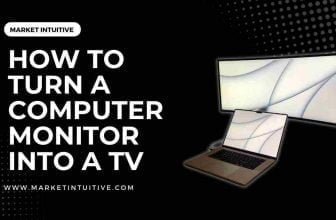12 Best Vertical Monitor To Gain More Productivity

The best vertical monitor gives you valuable alternatives for streamlining your setup if you have less space. You can use it as a supplementary display to show a long, scrolling website like Twitter or Facebook.
Additionally, switching a monitor from landscape to portrait mode has ergonomic advantages. Your head, neck, and eyes don’t move much from left to right in vertical (or portrait) mode.
A more pleasant viewing experience is obtained with less movement. Additionally, scrolling up and down is simpler than scrolling left to right.
Vertical monitors are not common, and they are still a new idea. It only makes up a small portion of the display.
You must evaluate important factors like resolution, size, and refresh rate. You don’t need the highest specifications if searching for a secondary screen that flips. However, the best vertical monitor must perform more than mere rotation.
What Are Vertical Monitors, And Why Are They Gaining Popularity?
A vertical monitor can be converted into two horizontal screens, giving users a dual-screen experience. In addition to having a larger screen, vertical monitors are often supported by high resolutions.
Vertical monitors are suitable for eyesight. They make it easier to focus on a certain screen area and its contents.
It is advantageous for both writers and readers to read extended passages without moving their eyes. Programmers can read longer codes without having to scroll too much.
Additionally, vertical monitors can significantly increase productivity. When you combine the advantages of vertical screens with high-speed internet connectivity, your productivity will rise 10 times higher than a horizontal display.
What are vertical monitors used for?
Most programmers and coders prefer a vertical orientation for screens. A vertical setup is ideal for any coder because the lines in the code are typically not that wide.
Readers won’t have to continuously scroll back and forth between any book or novel they are reading because more lines can be seen at once.
This is how the best vertical monitor benefits programmers, coders, writers & readers.
Why Choose A Vertical Monitor Over A Horizontal one?
Several strong justifications support the use of the best vertical monitor. If you already have a horizontal monitor, you may combine it with a vertical monitor to make a fantastic dual-screen setup.
Let’s now examine various reasons for choosing a vertical monitor over a horizontal one.
Space-saving
Think how difficult it would be to set up two widescreen monitors on a small workstation. Each would occupy a sizable portion of the desk’s surface space.
A vertical monitor is preferable in this situation; it takes less space on a desk or work surface than any horizontal layout.
While setting up a single workstation, you can use a vertical monitor instead of a horizontal one. This free up a lot of desk space.
Productivity Enhancement
Scrolling across pages could be laborious for someone whose profession requires them to do a lot of code. Scrolling time is significantly reduced when more content is displayed on a vertical monitor.
Also, increased visibility from more functions results in improved smoothness. You can watch at least three times as much content on vertical monitors as you could before.
Any position requiring extensive reading or writing must adhere to this regulation.
Here are some benefits of vertical monitors for professionals:
- Coder – If you are a programmer, you may examine many codes on a single screen. Additionally, it enables them to analyze any code errors and apply the proper modifications and corrections.
- Streamer – You can video chat while reading lengthy remarks online as a streamer. You may also follow debates to keep track of messages before they disappear.
- Video Editor – This application allows you to easily edit portrait videos for social media posts and vertical advertising campaigns.
Comfortable on the Eyes, Neck, and Wrist
Your head will naturally move vertically to scan the items when stacked vertically from top to bottom, relieving strain on your neck.
Text, books, signboards, and arrival/departure boards are positioned vertically in airports and train stations to lessen the pressure.
So, a vertical monitor with a vertical screen stands comfortable on the eyes, neck, and wrist.
Time-saving
You can work for longer amounts of time if your eyes don’t become tired quickly.
Vertical monitors let you scan more information in less time. This happens because of the reduction in the range of eye movement. Operations are done more quickly when they are carried out vertically.
It might only apply to a few jobs that involve reading a lot, such as deciphering computer code, editing written materials, reading legal documents, and penning lengthy academic papers.
Factors To Consider When Picking The Best Vertical Monitor
Here are the factors to consider while purchasing the best vertical monitor:
Resolution
The number of pixels your monitor shows on the screen horizontally and vertically, is referred to as resolution. These figures determine the visual quality displayed on the monitor. There are three common resolutions for modern monitors:
- 1920 x 1080 (1080p or Full HD): It is the standard resolution for less-priced and smaller displays; for 24-inch monitors and work-from-home arrangements, I advise 1080p displays. The best resolution for the best vertical monitor is often 1080p.
- 2560 x 1440 (1440p or Quad HD): This sharp resolution enables gamers with mid-range or powerful gaming PCs to play various games at greater frame rates. Popular Science sometimes refers to 1440p as a “sweet spot” for gaming monitors.
- 3840 x 2160 (4K UHD for short): It has the greatest resolution a monitor can display. In contrast to TVs, 4K resolution in a monitor is seen as a luxury unless you want the highest visual quality. If you get a monitor that is 32 inches or more, get 4K to maintain the image as sharp as possible.
Connectivity
Check whether the monitor has the necessary number of ports or inputs or not. Most current monitors have HDMI and DisplayPort ports for connecting to a computer.
Many additionally include USB connections for charging and connecting extra gadgets. Remember that you might require an adaptor to connect over older connections like DVI if you use an old PC.
Size
When you use a vertical monitor, speed and color accuracy matter significantly less than they often do. Therefore size becomes more crucial than usual. Choosing a larger monitor will also make it easier to see your vertically oriented content quickly.
When viewing real-time analytics or audio levels, a larger display makes it simpler to spot minute details rapidly.
Remember that your monitor’s proportions alter when rotated vertically if you’re in a small location. When you flip it, if it is 27 inches wide and 14 inches tall, the monitor becomes 13 inches higher.
Additionally, if you’re adding a second monitor for the first time, remember that you might need to adjust your chair to watch the monitor comfortably. If you require a more dynamic workspace to ensure everything lines up, I advise opting for an adjustable standing desk or monitor arm to provide more flexibility.
Refresh Rate and Response Time
How frequently a monitor can update what is displayed each second is indicated by its refresh rate, expressed in Hertz (Hz). Most productivity monitors have a refresh rate of 60Hz, which is ideal for regular computer tasks like web browsing and word editing.
I advise choosing a gaming monitor with a 144Hz refresh rate if you play games, stream content, or do a lot of pictures & video editing because it allows for smoother animation.
Response time is used to describe the very slight input lag that your monitor introduces when actions from your keyboard or mouse are transmitted to your computer and subsequently to your screen.
Response time is only a minor consideration for most productivity monitors, including a vertical monitor. It is mostly an issue in gaming that is competitive. I advise looking for at least a 1ms response time, which is extremely common while evaluating gaming displays.
Other Features
All vertical monitors on my list are, by definition, capable of vertical rotation. However, you might also think it’s vital to tilt or modify the monitor’s height, which some stands let you do, and others don’t. Similar to speakers for playing music, some but not all monitors include an integrated webcam.
Comparison of Best Vertical Monitor
IMAGE | MODEL | DISPLAY RESOLUTION(MAXIMUM) | REFRESH RATE | OTHER FEATURES | COST | RATING |
HP VH240a 23.8-inch Full HD Monitor | 1920 x 1080 Pixels | 60 Hz | Integrated audio speakers, Thin Bezel-Less frame, 5ms response time | CHECK PRICE | 4.7 / 5 | |
Acer Nitro VG240Y Pbiip 23.8″ Vertical Monitor | 1920 x 1080 Pixels | 144 Hz | Tilt Adjustment, Flicker-Free feature, Full HD Widescreen IPS Monitor, AMD Radeon FreeSync Technology | CHECK PRICE | 4.7 / 5 | |
ASUS Vertical Monitor VN279QL 27” | 1920 x 1080 Pixels | 60 Hz | VGA, D-Sub, DisplayPort, HDMI connectivity, Tilt, Swivel, Pivot, Height adjustment, ASUS VividPixel Technology | CHECK PRICE | 4.6 / 5 | |
Acer CB241H bmidr 24” Full HD Monitor | 1920 x 1080 Pixels | 60 Hz | Tilt Adjustment feature, 1ms response time, 0.276mm pixel pitch | CHECK PRICE | 4.4 / 5 | |
Dell U2414H 23.8” Widescreen | 1920 x 1080 Pixels | 60 Hz | Widescreen (16:9) aspect ratio, Anti Glare screen feature, 1000:1 contrast ratio | CHECK PRICE | 4.4 / 5 | |
BenQ PD2700Q Vertical Monitor | 2560×1440 Pixels | 60 Hz | 100% Rec. 709 and sRGB for optimal color precision, DualView Function to split screen into two windows, Display Pilot Software for customized monitor settings | CHECK PRICE | 4.5 / 5 | |
LG U27UK850-W 4K UHD Monitor | 3840 x 2160 Pixels | 60 Hz | 3-Side Virtually Borderless Display, USB-C with 60W Power Delivery, SRGB 99% Color Gamut | CHECK PRICE | 4.6 / 5 | |
Samsung SE450 Series 23.6 inch FHD | 1920 x 1080 Pixels | 60 Hz | Blue Light Filter, Anti-Glare Coating feature, Superior ergonomics and eco-friendly features, Supports VESA mounting capability | CHECK PRICE | 4.5 / 5 | |
Samsung Business SR650 Vertical Monitor | 1920 x 1080 Pixels | 75 Hz | Anti-Glare Coating, Swivel Adjustment, Frameless feature | CHECK PRICE | 4.6 / 5 | |
Acer ET241Y Abmir 23.8” Full HD Zero Frame Monitor | 1920 x 1080 Pixels | 60 Hz | Full HD widescreen IPS display, VGA cable included, 0. 275mm pixel pitch | CHECK PRICE | 4.4 / 5 | |
ViewSonic XG2560 Vertical Monitor | 1920 x 1080 Pixels | 240 Hz | NVIDIA G-SYNC technology enables smooth frame rates, Fully adjustable ergonomic stand, Flexible connectivity | CHECK PRICE | 3.9 / 5 | |
Dell Vertical Monitor UltraSharp 1909W | 75 Hz | USB Hub, Wide screen feature, VGA, USB, DVI connectivity, LCD display / TFT active matrix | CHECK PRICE | 3.4 / 5 |
Let us explore each of the listed vertical monitors.
Top Best Vertical Monitor You Can Buy Right Now
HP VH240a 23.8-inch Full HD Monitor
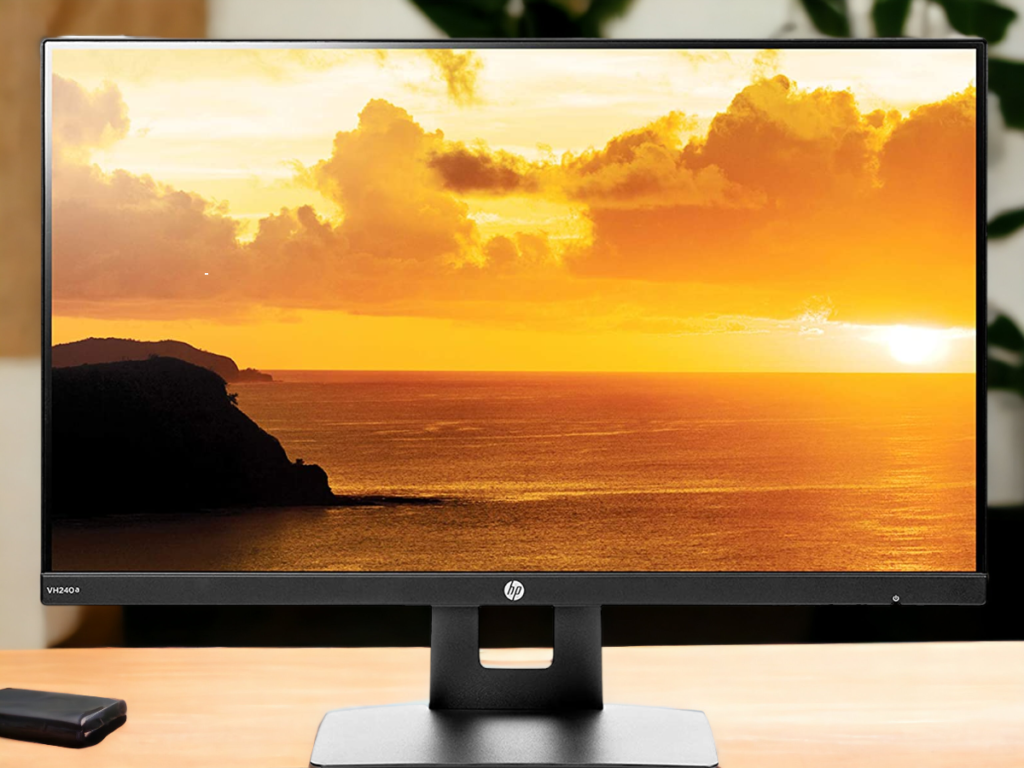
Great quality monitor at a reasonable price
SPECIFICATIONS
- 23.8 Inches screen size
- 1920 x 1080 Pixels display resolution(maximum)
- Integrated audio speakers
- Thin Bezel-Less frame
- 60 Hz refresh rate
- 5ms response time
TODAY’S BEST DEALS
CHECK ON AMAZON
The screen size of the HP VH240a is 23.8 inches, and its maximum resolution is 1920 by 1080 with a 16:9 aspect ratio. It has an IPS panel and an LED monitor.
This HP monitor can be used in landscape and portrait modes, a feature I truly value and propel it to third place on my list of the best vertical monitor. Users can discover the best viewing angles and reduce eye strain with its fully adjustable stand.
It might be for casual gaming, but I would not suggest it as a gaming monitor because it has a refresh rate of 60 Hz and a response time of 5 milliseconds, which are much below the minimum requirements for gaming monitors. The lack of syncing compatibility further prevented it from being a decent gaming option.
The monitor does have speakers, which is useful if you plan to travel with it or don’t have access to other audio sources. The built-in speakers did not particularly excite me, but they do the job, which is more than one can typically ask of a pair of monitor speakers.
As additional evidence of its ergonomic design, it can tilt and is height-adjustable so that regardless of where it is on your desk and how far away you are sitting from it, you should be able to view it at any angle. Because I like to lean back in my chair, and I found the tilt options extremely useful.
This monitor features VGA, HDMI, and HDCP connectivity options.
Acer Nitro VG240Y Pbiip 23.8″ Vertical Monitor
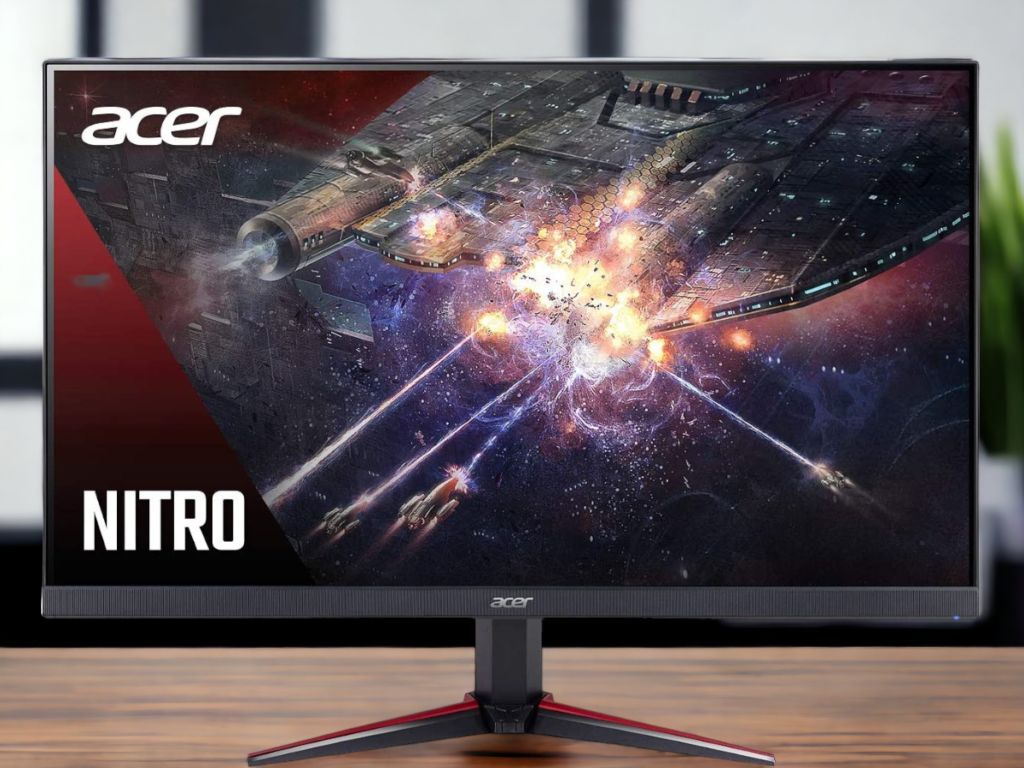
Great value gaming monitor
SPECIFICATIONS
- 23.8 Inches screen size
- 1920 x 1080 Pixels display resolution(maximum)
- Tilt Adjustment, Flicker-Free feature
- Full HD Widescreen IPS Monitor
- AMD Radeon FreeSync Technology
- 1ms VRB response time
- Zero frames design
- 144 Hz refresh rate
TODAY’S BEST DEALS
The gamers will benefit most from Acer’s Nitro 24-inch vertical monitor. Every frame counts in professional gaming. If you want to be productive, you can use it for your work-from-home arrangement.
Flicker-free, low dimming, and ComfyView displays allow you to watch games in comfort. The zero-frame design eliminates the bulky frames present on traditional displays, creating more valuable screen real estate.
The monitor’s superior IPS technology uses a sophisticated liquid crystal compound. As a result, there are no color differences at any viewing angle, resulting in excellent color performance.
Acer Monitors provide gamers with a fantastic in-game experience because of their quick 144Hz refresh rate, which reduces input lag and the amount of time needed for frame rendering.
ASUS Vertical Monitor VN279QL 27”
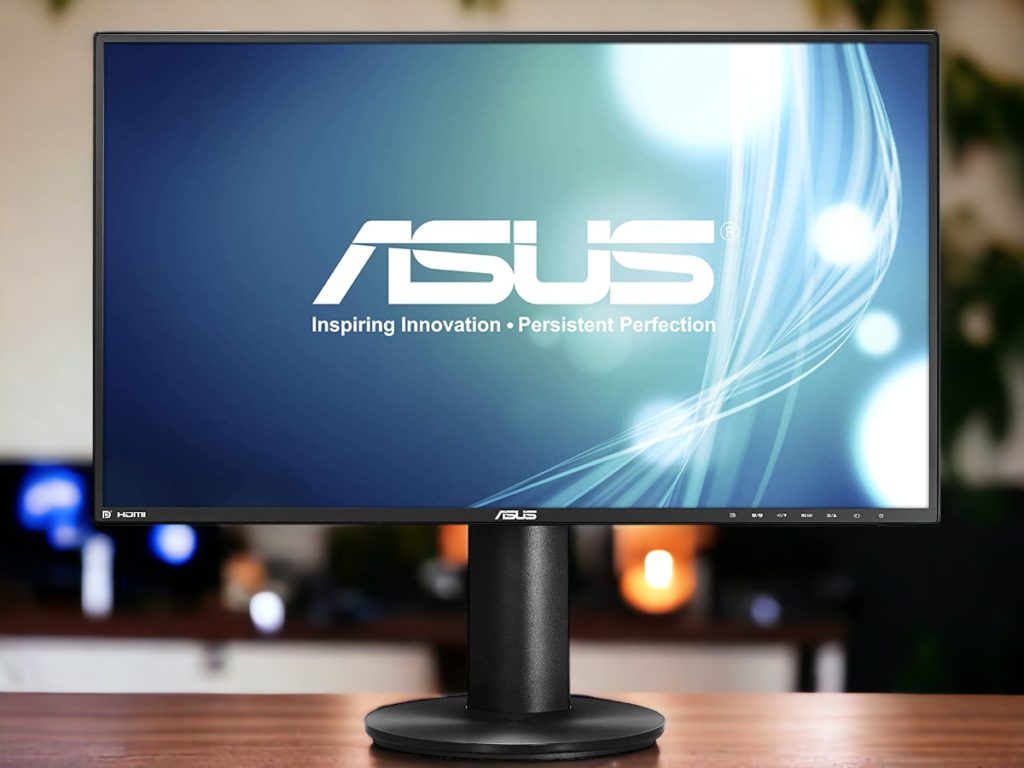
Great large, rotating monitor
SPECIFICATIONS
- 27 Inches screen size
- 1920 x 1080 Pixels display resolution(maximum)
- VGA, D-Sub, DisplayPort, HDMI connectivity
- Tilt, Swivel, Pivot, Height adjustment
- ASUS VividPixel Technology
- Wall mount capability
- The super narrow bezel design
- Ergonomic design
- 60 Hz refresh rate
TODAY’S BEST DEALS
The ASUS 27-inch VN279QL monitor has a 16:9 aspect ratio with a maximum resolution of 1920 by 1080. It is an LED display with a VA panel.
ASUS VN279QL works in both landscape and portrait orientations.
It has a response time of 4 milliseconds, which is respectable for gaming but has a 60 Hz refresh rate, which is less than unique if you intend to use it for gaming. This monitor’s ability to switch to landscape mode for some light gaming or to portrait mode for work would be appreciated by gamers. Unfortunately, it does not support any synchronizing technologies.
ASUS VN279QL is a great alternative for a computer system with several displays because of the relatively thin (8-millimeter) bezel. This monitor would be a good choice for your main display or a great alternative for your secondary displays. Additionally, this monitor is VESA mount compatible, so adding it to your setup with numerous displays should be simple.
The monitor’s design is ergonomic and has a wide range of features. The stand can tilt and swivel, and a height adjustment option exists.
This monitor is compatible with D-sub, DisplayPort, and HDMI for connectivity.
Acer CB241H bmidr 24” Full HD Monitor
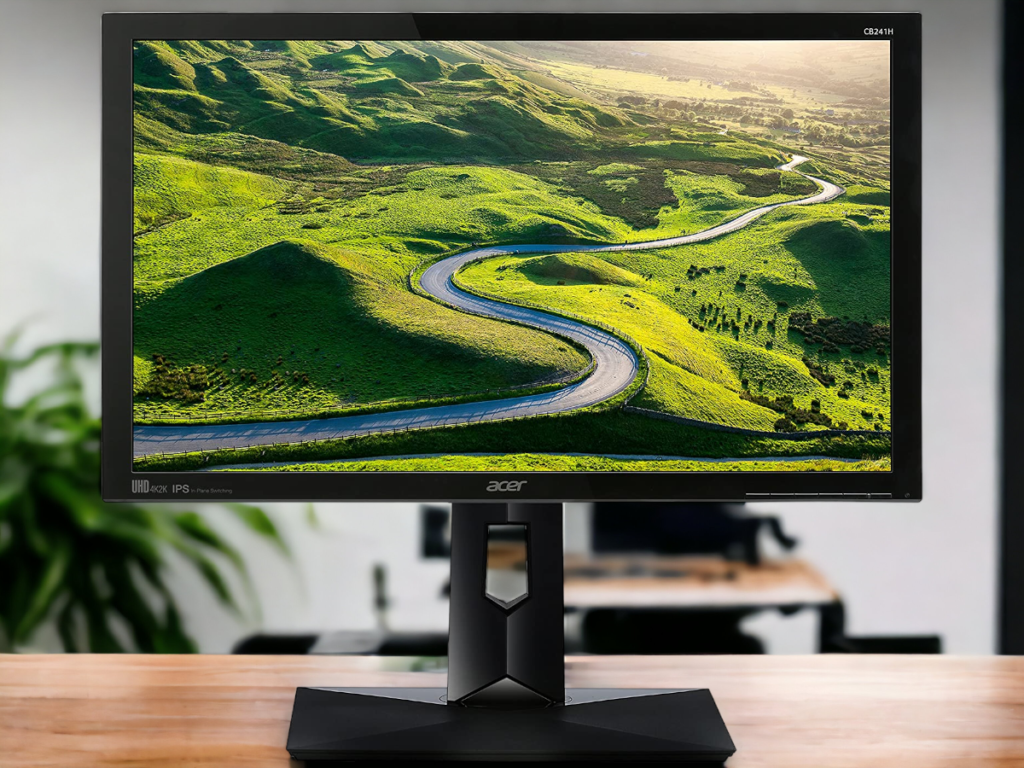
Excellent monitor with a stand that rotates to portrait or landscape orientation
SPECIFICATIONS
- 24 Inches screen size
- 1920 x 1080 Pixels display resolution(maximum)
- Tilt Adjustment feature
- 60 Hz refresh rate
- 1ms response time
- 0.276mm pixel pitch
TODAY’S BEST DEALS
Acer’s CB241H is a 24-inch monitor and supports 1920 by 1080 resolution. It is an LED monitor with a pivotable TN panel type that works in landscape and portrait configurations.
The display has 60 Hz refresh rate and a 1 millisecond response time. Due to this, it is a fascinating game option. Although it has an exceptional response speed that should attract any professional gamer, the refresh rate significantly reduces its performance. Furthermore, it lacks any form of synchronizing capability, which is another setback.
The internal speakers are usable but not exceptional, in my opinion. Even though they aren’t the best, they do a good job as monitor speakers.
Despite being VESA compliant, the CB241H’s bezel is extremely thick, which may make it a poor choice for a workplace with several displays. However, not everyone finds large bezels bothersome, and if this describes you, the benefits of this monitor’s versatility exceed its drawbacks.
Dell U2414H 23.8” Widescreen
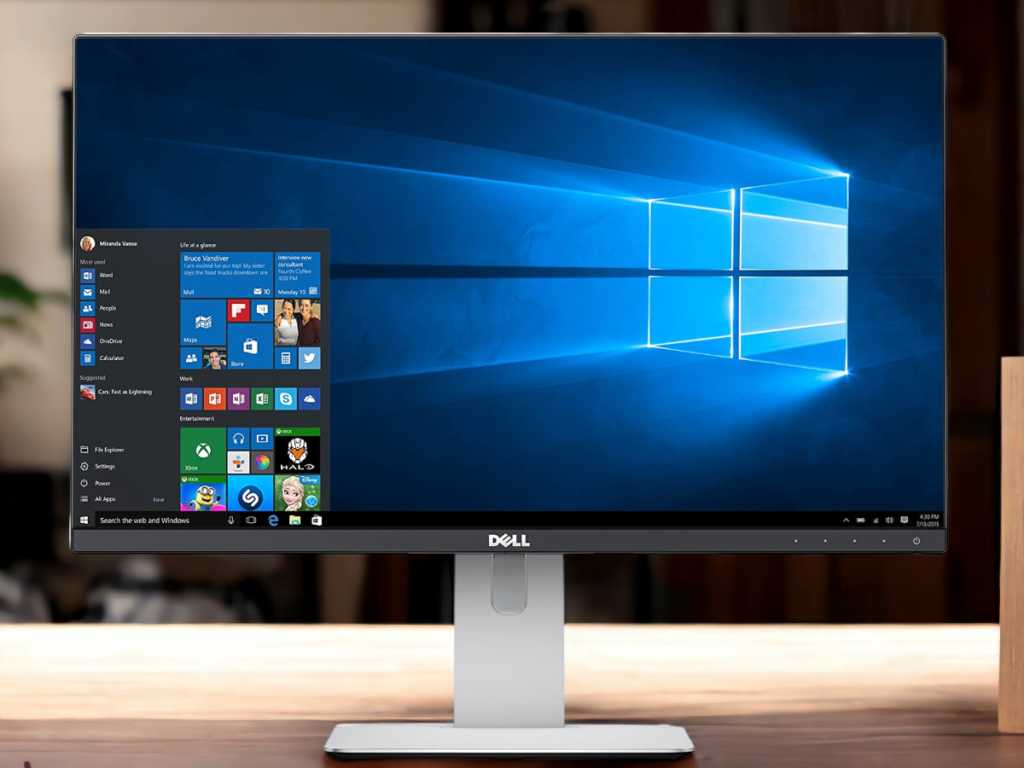
Excellent IPS monitor for gaming
SPECIFICATIONS
- 24 Inches screen size
- 1920 x 1080 Pixels display resolution(maximum)
- Widescreen (16:9) aspect ratio
- Anti Glare screen feature
- 1000:1 contrast ratio
- 60 Hz refresh rate
TODAY’S BEST DEALS
The Dell U2414H has a 23.8-inch screen with 1920 by 1080 maximum resolution and a 16:9 native aspect ratio.
This monitor has an IPS display and an LED. If you go for a Dell monitor over an ASUS monitor, the U2414H is a good alternative with complete pivot functionality and works in both landscape and portrait. Anyone trying to enhance productivity will find it quite beneficial, making it ideal for use in a home office.
With a response time of 8 milliseconds, it is extremely quick. This monitor has a 60 Hz low refresh rate. I had a noticeable latency when using this, and I wouldn’t suggest it for even light gaming.
This monitor uses extremely little electricity. It is TCO Certified, EPEAT Gold certified, and complies with ENERGY STAR regulations. It indicates that it uses little energy given its size and resolution, allowing it to use for long periods without worrying about running up a big light bill.
These monitors are great for multitasking but can be a little erratic, and their quality may deteriorate after six months.
This monitor should function flawlessly in a professional capacity across various industries, such as writing, coding, video editing, or photography. However, I wouldn’t suggest this for any kind of game. Its slow refresh rate and long response time are severely constrained in this aspect.
BenQ PD2700Q Vertical Monitor
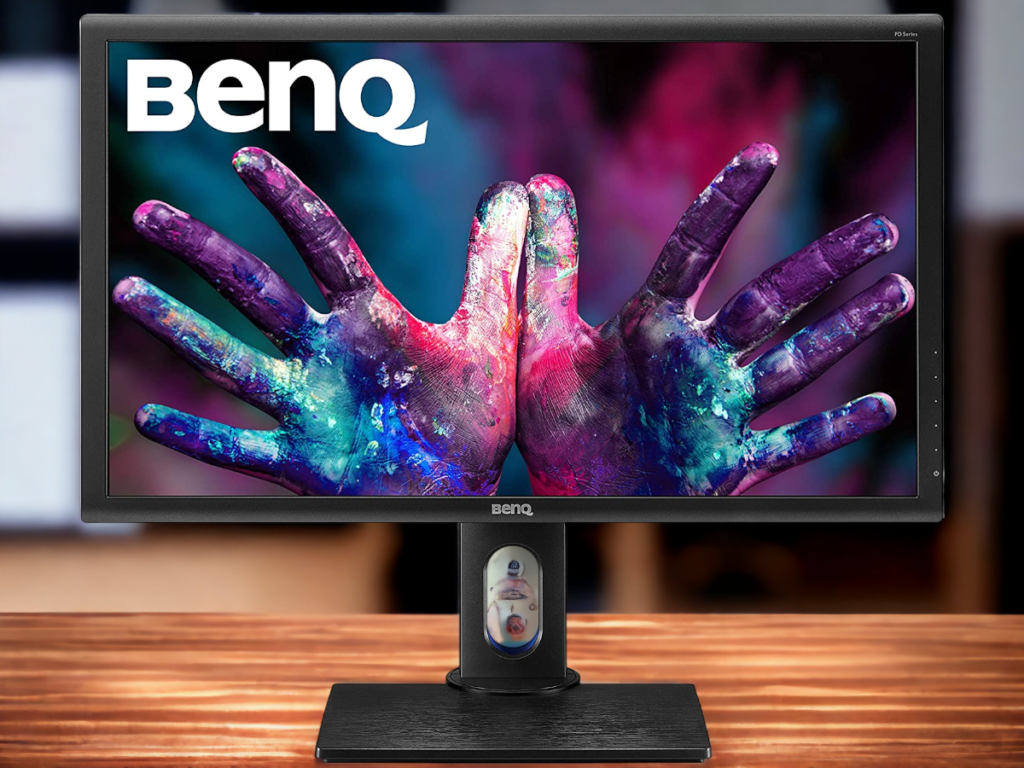
Good monitor for graphic design and drawing
SPECIFICATIONS
- 27 Inches screen size
- IPS QHD resolution
- 2560×1440 Pixels display resolution(maximum)
- 100% Rec. 709 and sRGB for optimal color precision
- DualView Function to split the screen into two windows
- Display Pilot Software for customized monitor settings
- 60 Hz refresh rate
TODAY’S BEST DEALS
The top feature of this top vertical monitor for coding is 100% sRGB coverage, which provides exceptional color space accuracy and image quality. It also helps since 10-bit color depth equates to more than 1 billion colors.
For photographers who prefer a realistic color display above refresh rate, response time, response rate,& input lag, I think this QHD is a fantastic option.
The variety of picture modes focused on specific tasks is my favorite aspect of this vertical portrait display.
Depending on the project, it can be set to the darkroom, CAD/Cam, or animation modes, optimizing image detail to stay true to form. With a good tilt angle (25°), swivel (45°), and 5 inches of height adjustment, it also excels ergonomically.
It’s one of my top choices for a photo editing display.
LG U27UK850-W 4K UHD Monitor
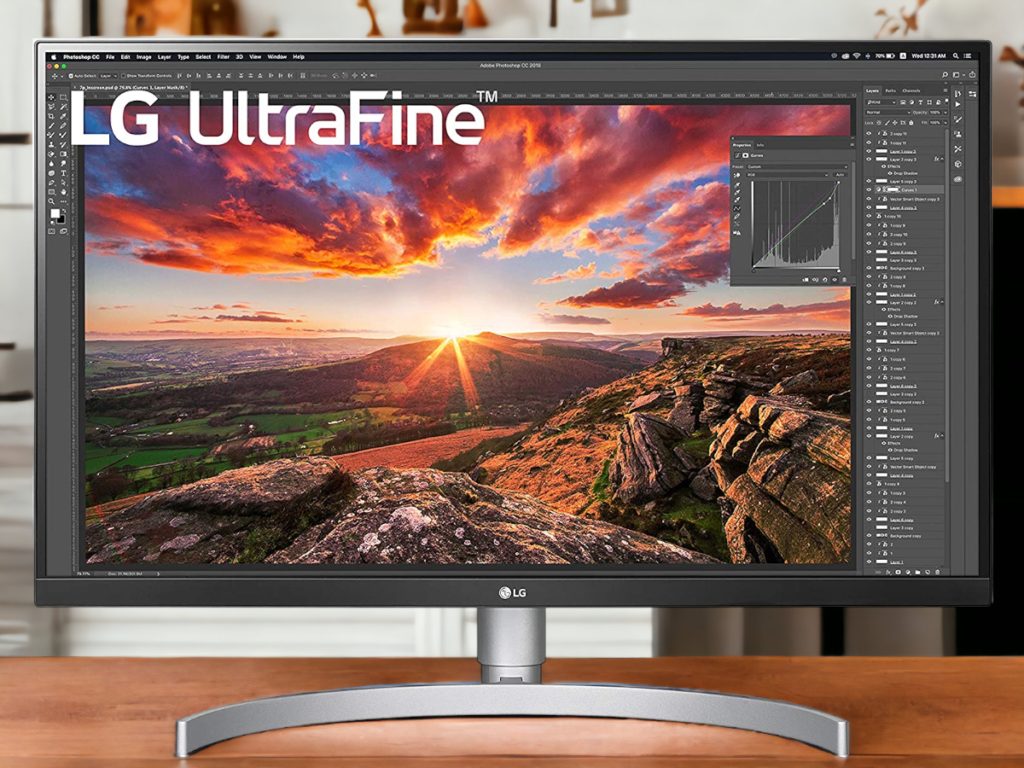
Great for a more casual PS5 gaming experience
SPECIFICATIONS
- 27 Inches screen size
- 3840 x 2160 Pixels display resolution(maximum)
- 3-Side Virtually Borderless Display
- USB-C with 60W Power Delivery
- SRGB 99% Color Gamut
- UHD IPS Display
- 60 Hz refresh rate
TODAY’S BEST DEALS
LG U27UK850-W 4K UHD Display is a terrific multifunctional vertical monitor. From general use to gaming & business, this monitor is excellent for many uses.
The display has an IPS Panel, to begin with. With this, you will receive photographs of the highest caliber and accuracy. It is perfect for both creative workers and coders.
Due to its 4k UHD resolution and 163 pixels per inch pixel density, it offers exceptional image clarity.
With a 10ms input lag and 178-degree viewing angles, the monitor allows for virtually any viewing angle without causing any problems. You may also set the monitor’s response time to 5 ms if you intend to use it for gaming so that you can play games with higher frame rates without experiencing any problems.
Additionally, the monitor includes a staggering array of features. It offers extremely little input lag, Screen Split for multitasking, On Screen Control, and support for AMD FreeSync. It has a 110 mm height adjustment range and is compatible with 100 x 100 mm VESA mounts.
With two HDMI 2.0 connectors, a USB-C port, a headphone jack, a dual USB 3.0 hub, and a DisplayPort 1.2 port, the connection is also rather amazing. Although the lack of a swivel option is somewhat annoying, on the larger scale of things, it’s a somewhat small issue overall.
Samsung SE450 Series 23.6 inch FHD

One of the best vertical monitor
SPECIFICATIONS
- 23.6 Inches screen size
- 1920 x 1080 Pixels display resolution(maximum)
- Blue Light Filter, Anti-Glare Coating feature
- Superior ergonomics and eco-friendly features
- Supports VESA mounting capability
- Versatile connectivity options
- LED-backlit LCD screen
- 16:9 aspect ratio
- 60 Hz refresh rate
- Height Adjustment
- Sleek, slim design
- Wall Mountable
- Flicker-Free
TODAY’S BEST DEALS
The Samsung SE450 is a 23.6-inch monitor with a maximum resolution of 1920 by 1080 and a 16:9 aspect ratio. It is an LED monitor with a TN panel type that can pivot completely.
Its characteristics are not great for gaming. It has 60 Hz refresh rate and 5 ms response time. However, it offers a blue light filter and flicker-free technology to protect your eyes from eye strain and harmful blue light.
In other words, you can use your computer for a long time without worrying about eye strain or injury. It is not compatible with any synchronizing software.
Although this monitor lacks inbuilt speakers, it does provide several connecting choices, including VGA, DVI, and DisplayPort 1.2.
Samsung Business SR650 Vertical Monitor
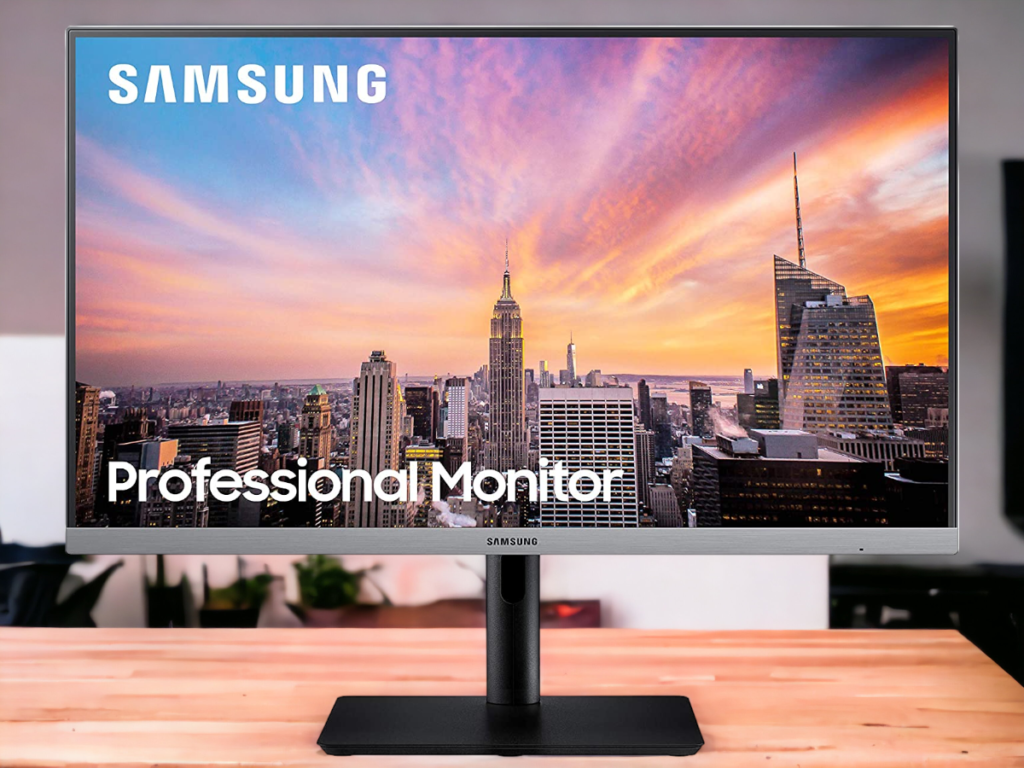
Good for a second monitor on a small desk
SPECIFICATIONS
- 23.8 Inches screen size
- 1920 x 1080 Pixels display resolution(maximum)
- 75 Hz refresh rate
- Anti-Glare Coating
- Swivel Adjustment
- Frameless feature
- Flicker-Free
- Wall Mountable
TODAY’S BEST DEALS
This Samsung’s best vertical monitor stands out with a 1920 and 1080 IPS Panel. Additionally, this device has a 75Hz refresh rate and response time and is compatible with AMD FreeSync technology, which adjusts refresh rates to minimize screen lag. This makes it a powerful gaming monitor.
It deserves praise for its Eye Saver mode, which helps to lessen glare that can cause eye strain after extended use.
This Samsung monitor has many connectivity choices, including one HDMI, DisplayPort, and VGA port, and an inbuilt USB hub (fits 4) for charging and attaching external devices like mice and sound systems.
It also supports VESA for simple wall installation. Overall, the vertical monitors’ mix of visual quality and motion management satisfied me. Anyone looking for the greatest monitor for viewing movies will love receiving it as a gift.
Acer ET241Y Abmir 23.8” Full HD Zero Frame Monitor
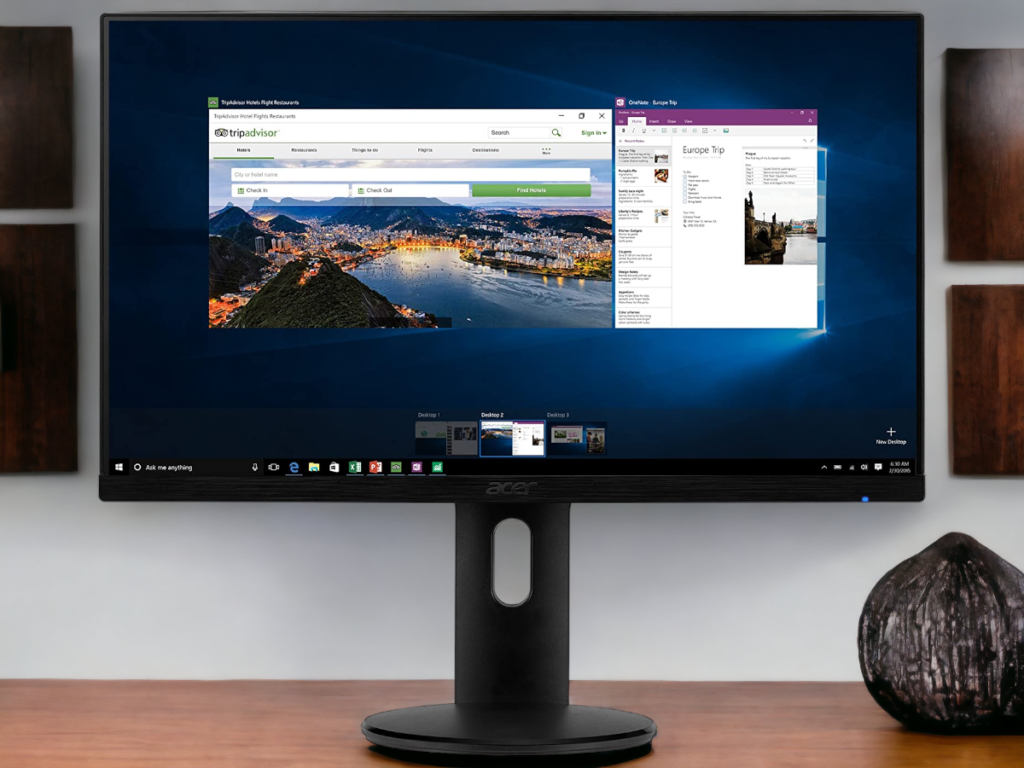
Perfect monitor for working at home
SPECIFICATIONS
- 23.8 Inches screen size
- 1920 x 1080 Pixels display resolution(maximum)
- Full HD widescreen IPS display
- VGA cable included
- 0. 275mm pixel pitch
- 4ms response time
- Built-In Speakers
- 60 Hz refresh rate
TODAY’S BEST DEALS
The ET241Y from Acer has a screen size of 23.8 inches with a maximum resolution of 1920 by 1080 at a 16:9 aspect ratio. It is a fully pivot-capable monitor. This monitor is an LED model with an IPS display.
Its response time of 4 milliseconds and 60 Hz place it firmly at the low end of the spectrum for gaming monitors. However, it should be noted that the response time is better than many of the monitors on this list.
Extremely subpar speakers are included. I could hardly hear the audio playing, even at the loudest setting. However, it might work if your surroundings are peaceful and you have no other choices. I advise using an alternative audio solution.
Although the frame is substantial, the monitor may not be the ideal choice for a multiple display arrangement, even though it is completely compatible with VESA installation.
ViewSonic XG2560 Vertical Monitor
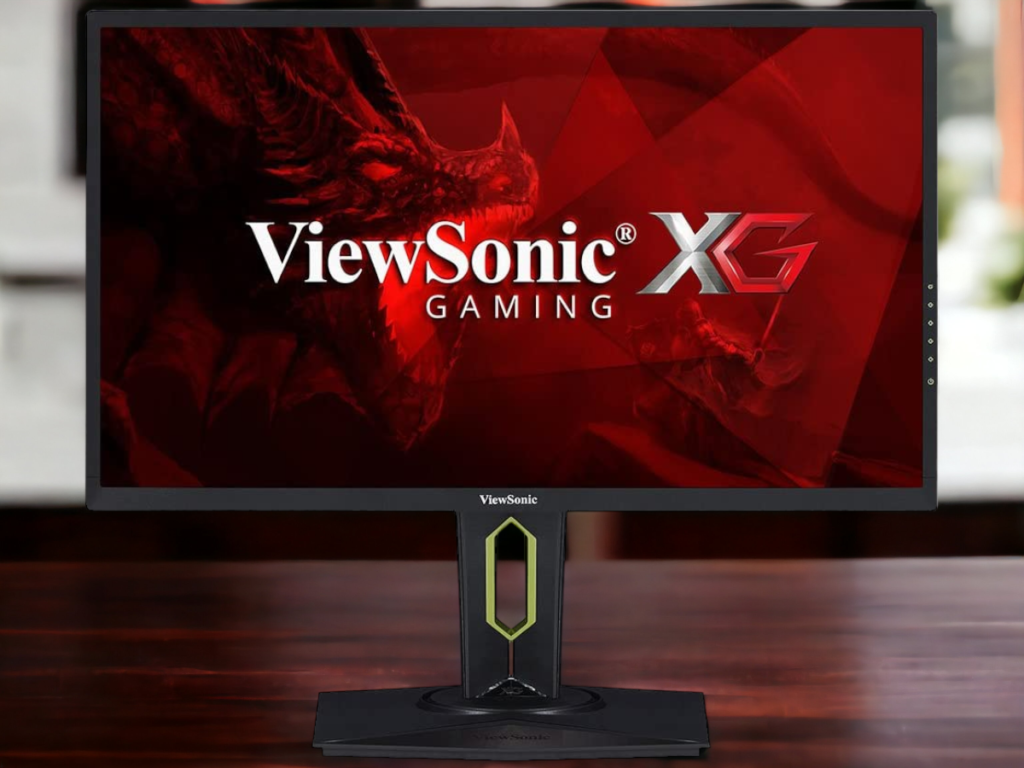
Excellent gaming monitor
SPECIFICATIONS
- 25 Inches screen size
- 1920 x 1080 Pixels display resolution(maximum)
- NVIDIA G-SYNC technology enables smooth frame rates
- Fully adjustable ergonomic stand
- Flexible connectivity
- Full HD 1080p resolution
- 1ms response time
- HDMI connectivity
- 240 Hz refresh rate
TODAY’S BEST DEALS
This vertical monitor excels on all fronts with its Full HD 1080p resolution for vibrant color pop and a 240Hz refresh rate combined with NVIDIA G-SYNC technology for frame rate optimization.
The Black Stabilization function on this set, which attempts to brighten gloomy images, is another of my favorite features.
The Game Mode hotkeys on this best vertical monitor are among my favorites in terms of ergonomics because they provide various color schemes and palettes depending on the gaming environment (e.g., FPS for first-person shooters).
A VESA bolt pattern for simple wall mounting is a plus, as are the four USB 3.0 ports for charging or connecting several external devices like soundbars and gaming mice.
Dell Vertical Monitor UltraSharp 1909W

One of the best vertical monitor
SPECIFICATIONS
- 19 Inches screen size
- USB Hub, Wide screen feature
- VGA, USB, and DVI connectivity
- LCD display / TFT active matrix
- 300 cd/m2 image brightness
- 1000:1 image contrast ratio
- 75 Hz refresh rate
TODAY’S BEST DEALS
The Dell UltraSharp 1909W is among the top vertical monitors. It has a 19-inch screen with a 16:10 aspect ratio and a maximum resolution of 1440 by 900.
This Dell vertical monitor also features an integrated USB hub, making it a very flexible alternative for any computer setup.
Although this monitor’s refresh rate is higher than many others on the list, it is still too low for gaming requirements. It is 75 Hz. In terms of gaming, its response speed of 5 milliseconds is less than optimal. If you decide to play video games on this monitor, you can experience some visual tearing or stuttering because it does not support any Syncing functions.
You will need to find another audio solution since this monitor doesn’t come with internal speakers.
Applications that don’t support a 16:10 aspect ratio may have issues with this monitor because of its unusual aspect ratio.
How I Decided On The Best Vertical Monitor
I looked at performance/display, resolution, ergonomics, and the number of ports to choose the best vertical monitor.
With vertical monitors, performance and display are at the top of the list. Avoid LED displays and focus on image quality with a 4K Ultra HD resolution over HD and HD+, along with several technologies (both specific to ASUS and shared by other brands) to provide a more vibrant image.
It should also closely conform to Adobe RGB color space to get the highest level of color integrity. On a less serious note, I appreciate refresh rates and response times of 120Hz or more, although they are typically not advised for non-gaming situations where a higher frame rate is desired.
Consider ergonomics in addition to the monitor’s functionality and design when selecting the best vertical computer monitor.
Choose the top vertical monitors that can easily be converted from a vertical to a horizontal display and have swivel, pivot, and tilting features. Additionally, ports should be placed front-facing rather than rear-facing on your monitor’s sides and bottoms for convenience.
The finest computer monitor should have at least two HDMI connectors and DisplayPort, VGA, and USB 2.0 and USB 3.0 ports to accept various devices that enhance your graphic design job.
Buyer’s Guide To The Best Vertical Monitor
Here are important features to consider before buying the best vertical monitor:
Ergonomics
The more comfortable different viewing angles and seating arrangements are, the better the ergonomics. I adore monitors with stands that can swivel, tilt, and move up or down to the ideal height concerning your viewing distance and scrolling motion.
Regarding screen size, I normally choose programs that require a screen size of at least 27 inches and less than 20 inches for simpler tasks like reading emails.
Performance/ Display
I prefer 4K Ultra HD resolution over HD and HD+ on the top vertical displays for the greatest possible picture. Different screen technologies, such as IPS displays, are stacked on top for dynamic contrast with deeper blacks and purer whites.
Remember that LED displays and LCD panels are often used for better brightness. Specialized technology, such as ASUS.
A more vibrant image is also produced by Asus vertical monitors’ ASUS VividPixel Technology. Consider the refresh rate and response time for a visual that moves smoothly.
Number of Ports
A minimum of two HDMI ports and VGA, D-Sub, and DisplayPort connectors for other frequently used devices should be included on the best vertical displays. Up to four USB, 3.0 ports are available on some vertical monitors.
FAQs on Best Vertical Monitor
1. Can monitors be used vertically?
Although most people use their monitors in the traditional landscape configuration, turning them to a vertical angle can also be useful, particularly if you’re setting up multiple displays and have a small desk. However, most monitors available today aren’t designed to be used vertically.
2. Why do gamers have a vertical monitor?
Video game streamers display their chat on vertical monitors to make it easier to read through chat during a stream. A vertical display would be helpful for anyone who reads a lot of web information, even just for enjoyment.
3. Why do people have vertical monitors?
Since a vertical monitor layout puts less pressure on your eyes, it helps speed up tasks like writing text, writing code, processing, and reading. Your eyes won’t grow tired from reading for so long because you’re not using them as much.
4. What size is best for vertical monitor?
For 24-inch monitors and work-from-home arrangements, I advise 1080p displays. The best resolution for a vertical monitor is often 1080p. A crisper resolution is 2560 x 1440, also called 1440p or Quad HD.
5. Can I make my monitor vertical?
After clicking Start, input settings. Select a screen orientation from the drop-down list which is next to Display orientation by selecting Settings > System > Display.
6. Can Dell monitors go vertical?
Physically rotating your display into a vertical position should be simple if you use one with a stand. The specific steps vary depending on the manufacturer, but some Dell monitors, for instance, have some sort of lock on the back you press to enable screen rotation.
7. Why do programmers use vertical monitors?
Similar to most other situations, people typically scan shorter lines more quickly. A vertical monitor, as opposed to a landscape or horizontal one, saves programmers from pointless scrolling and makes things more convenient by using the available screen area better.
8. Can I use a curved monitor vertically?
Curved monitors are not ideal for a portrait mode setup. Curved monitors are intended for horizontal use. The curve’s purpose is to give the monitor some physical stiffness.
9. When should you use a portrait monitor?
Long documents or websites look fantastic on vertical monitors since they take up less horizontal space than standard monitors. They are, therefore, perfect for confined locations or small workstations. Given that our eyes are more accustomed to reading vertically than horizontally, they also offer a more natural method of viewing text.
10. How to make my Dell monitor vertical?
Dell monitors can be made vertical in two ways:
1st Method –
- Ensure that the computer has Dell Display Manager installed.
- The computer recognizes your connected monitor.
- Launch the OSD menu, then choose Menu Settings. Choose Rotation and turn on Portrait screen rotation.
2nd Method –
Use Operating System settings on the computer:
- Click Properties with the right mouse and click on the desktop.
- Click Advance by selecting the Setting tab.
- Choose the Rotation tab and set your preferred rotation if your graphics card is from ATI.
- If your graphics card is from Nvidia, click the nVidia tab, choose NVRotate from the left-hand column, and choose your preferred rotation.
- If your graphics card is Intel, Set your preferred rotation by selecting the Rotation tab under the Graphic Properties section of the Intel graphics panel.
Use On-Screen Display (OSD).
11. How do I make my Asus monitor vertical?
You can make your Asus monitor vertical:
- Click Display Settings by doing a right-click on the desktop.
- Choose the ProArt monitor that you want to tilt up.
- The screen’s display will switch to portrait mode when you locate the Display resolution setting and set it to [portrait].
12. Can Samsung monitors be vertical?
At CES, Samsung announced its new Odyssey Ark monitor, a curved 55-inch screen with a HAS (Height Adjustable Stand) that allows it to function as both a horizontal and vertical screen. Yes, you can rotate this object till it looms above you like a slender, 4K-resolution skyscraper.
13. Should my second monitor be vertical?
As a result, if you choose a dual-screen setup, it is always preferable to begin horizontally. Additionally, if you have to tilt your neck and viewing angle upwards for most of the day, vertical displays might strain your neck.
14. Are vertical monitors good?
They are essential, especially for engineers who spend a lot of time looking at code. It allows users to scroll once and view two complete pages at once. Increased response times and making the most of the available screen space to display more information simultaneously can increase job efficiency.
Related Topics:
- 8 Best 240 Hz Monitor In 2022 [Tested & Compared]
- 11 Best Computer Monitors For Music Production In 2023
Summary
The best vertical monitor will greatly raise the standard of your work and boost productivity and viewing pleasure. It can be helpful while creating vertical layouts, writing and reviewing substantial amounts of code, reading your favorite e-book, or even just looking through search engine results and articles on the internet.
Hope now you can choose the best vertical monitor for you!






